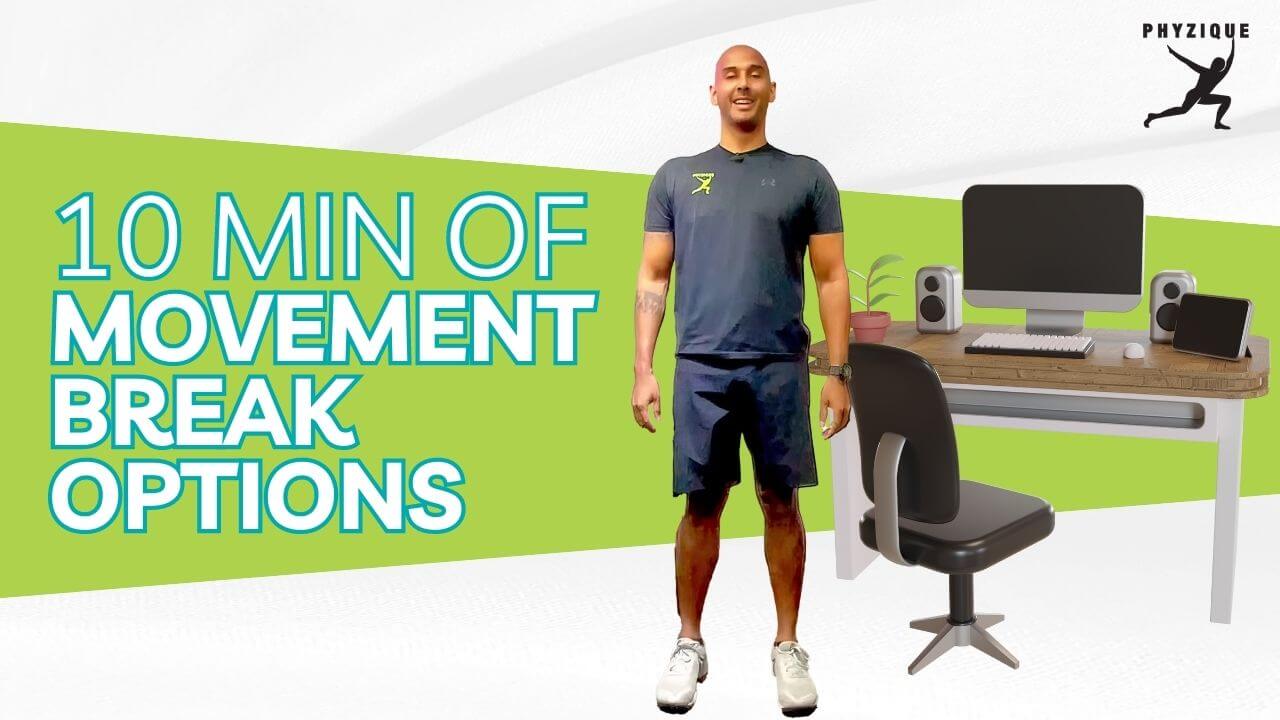Other Links
All about movement breaks
Health & Fitness Tips | Fri, 21 Jul 2023

Movement breaks refer to short, intentional breaks taken during periods of prolonged sitting or inactivity. These breaks involve engaging in physical movement and activity to counteract the negative effects of extended sedentary behavior. Movement breaks can be as short as a few minutes or up to several minutes, depending on your schedule and preferences.
The primary purpose of movement breaks is to reduce the risks associated with prolonged sitting, particularly in settings like working at a desk, driving, or any other activity that involves extended periods of immobility. During movement breaks, individuals are encouraged to get up from their seated position and engage in various physical activities to promote blood circulation, reduce muscle tension, and improve overall well-being.
Movement breaks are highly beneficial when sitting in front of a computer or driving for extended periods for several reasons:
Reduces Musculoskeletal Issues: Prolonged sitting can lead to poor posture and increased pressure on the spine and joints, leading to musculoskeletal problems like back pain, neck pain, and stiffness. Taking movement breaks helps alleviate these issues by allowing your body to change positions and release tension.
Improves Blood Circulation: When you sit for long periods, blood circulation can be compromised, leading to slower metabolism and an increased risk of blood clots. Movement breaks get your blood flowing, improving circulation and delivering oxygen and nutrients to your muscles and organs.
Enhances Energy and Focus: Sitting for long hours can cause mental fatigue and decreased concentration. Taking short movement breaks can rejuvenate your mind and body, enhancing your energy levels and improving focus and productivity.
Prevents Eye Strain: Staring at a computer or driving for extended periods can strain your eyes, leading to symptoms like dryness, redness, and headaches. Movement breaks give your eyes a rest and help reduce eye strain.
Promotes Joint Flexibility: Regular movement breaks help keep your joints flexible and mobile. Stretching and moving around can prevent stiffness and discomfort associated with immobility.
Boosts Mood and Reduces Stress: Physical activity triggers the release of endorphins, the “feel-good” hormones, which can elevate your mood and reduce stress and anxiety associated with long periods of inactivity.
Supports Weight Management: Sedentary behavior can contribute to weight gain and obesity. Taking movement breaks allows you to burn some calories and contributes to weight management.
Maintains Overall Health: Regular physical activity, even in short bursts, has numerous health benefits, such as improving cardiovascular health, reducing the risk of chronic diseases, and enhancing overall well-being.
To make the most of your movement breaks, consider incorporating various activities, such as stretching, walking, jogging in place, or doing some light exercises. Aim to take a short break every hour or so, even if it’s just for a few minutes, to keep your body and mind in better shape throughout the day. Remember, it’s not only about a single movement break, but the cumulative effects of incorporating regular movement into your daily routine.